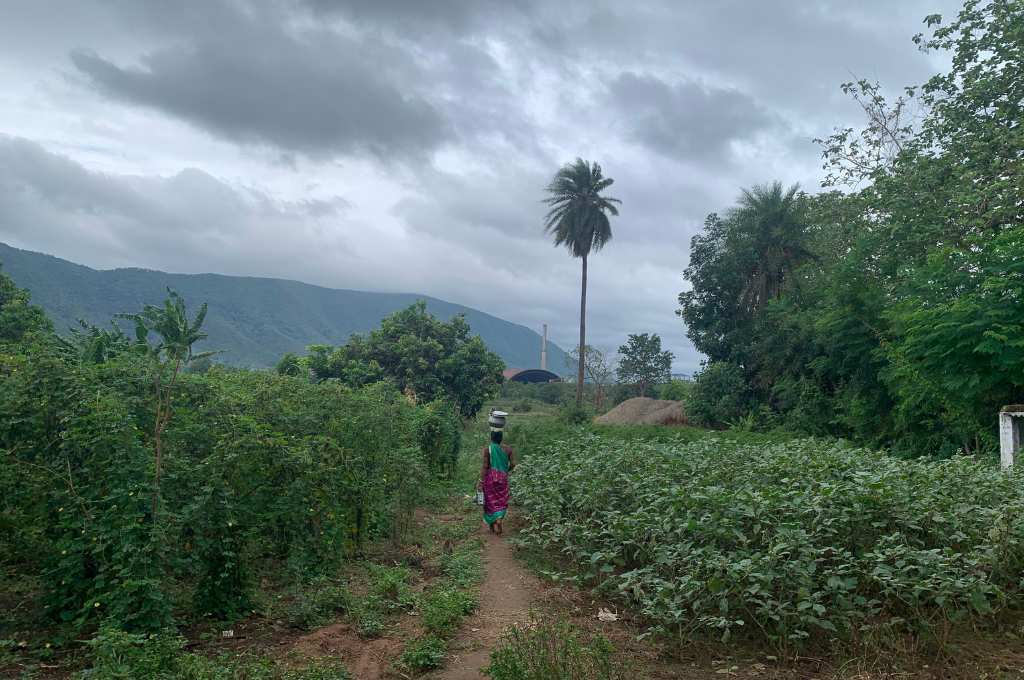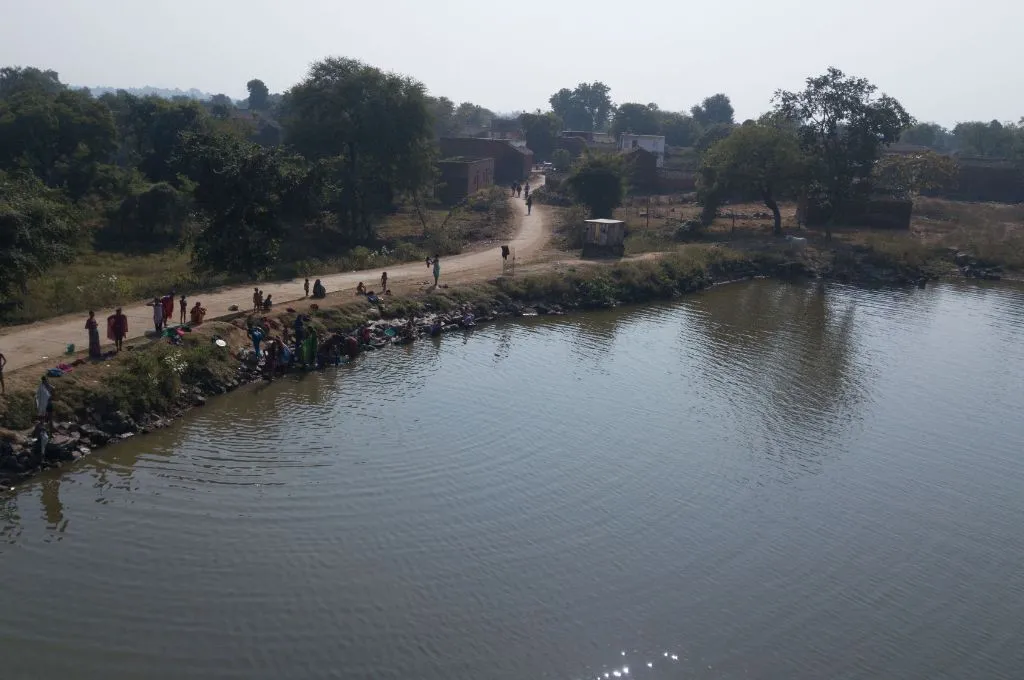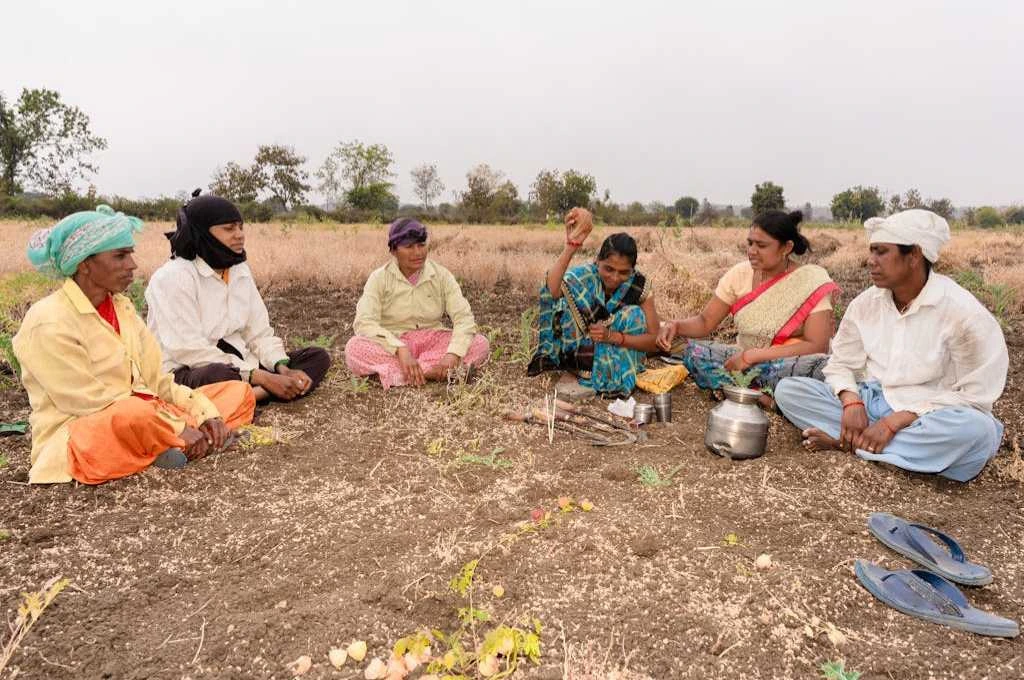For much of the twentieth century, Kalahandi district in southwestern Odisha was defined by drought and despair, which led to poverty and distress among its predominantly Adivasi population.
Drought in Kalahandi was not a consequence of climatic events alone. It was also the result of socio-economic failures that led to a decline in productive incomes—this was highlighted by the sociologist P Sainath in his book Everybody Loves a Good Drought. Sainath argued that government policies, including the reduction of subsidies on food and other essential items in the 1980s, the displacement of people for development projects such as dams and mines, and the exploitation of the poor through bonded labour, exorbitant interest rates, and low wages contributed to the extreme poverty of the district.
In another work titled Between the Plough and the Pick, Arnab Roy Chowdhury and Kuntala Lahiri-Dutt discuss how decades of rainfed agriculture, interspersed with artisanal gemstone mining, deepened the socio-economic divide in Kalahandi. These practices skewed the balance in favour of landlords and local traders who exploited the limited awareness of local communities. The quest for gems often meant that smallholder farmers did not have land to till during the monsoon, forcing them to turn to daily wage labour.
A new landscape
The grim situation was somewhat alleviated by the construction of Indravati Dam, which—once it became operational in 2001—enhanced farming and living conditions through improved water and power supply to the area. The majority of the population is engaged in agriculture, and 70 percent of the total water consumption in the area is due to agricultural activities. People also depend on animal husbandry and the collection of non-timber forest products for their income.
While Kalahandi district is divided into two sub-divisions containing thirteen blocks, this article focuses on one block—Lanjigarh. Due to the significant presence of tribal communities (chiefly the Gond, Khond, and Shabar tribes), the uneven distribution of landholdings, varying topography, the presence of a powerful industrial complex, prevalent agricultural practices and seasonal migration, Lanjigarh block can be viewed as a representative unit when discussing Kalahandi’s socio-economic development.
In 2007, Vedanta Alumina Refinery commenced production in Lanjigarh town, creating employment for more than 2,000 industrial daily wage workers.1 Large projects—for instance, Indravati dam and the alumina refinery—supplemented through investments in irrigation, roads, and power, nudged the district into an era of sustained growth. The lift irrigation canal system is an excellent example of the downstream irrigation projects that fuelled regional development. These lift irrigation systems helped draw water resources to previously fallow lands, increasing agricultural output and incomes in Kalahandi.
By some accounts, such investments in irrigation precipitated a three-fold growth in rural income, increasing wage rates and spurring mobility. Over the past two decades, projects such as roads and bridges, in particular, have played a significant role in the development of the region by enabling mobility and access to services. Small bridges are under construction in several villages, such as Tentulipada and Dumermunda. These bridges are meant to improve access to adjoining areas, especially during the monsoon.
Locals claim that unlike before, both short- and long-term migration for work is now mainly within the district.
Today, the effects of economic development are evident both in Lanjigarh town and the villages surrounding it. The town’s growth is a direct impact of the refinery’s investments. Signs of construction are everywhere, as buildings and hotels spring up and new businesses—from luxury car dealerships to retail brands—abound to serve the fleet of engineers and executives working for Vedanta. In some areas, particularly around the plant, rents have quadrupled in three years.
Locals claim that unlike before, both short- and long-term migration for work is now mainly within the district. During the dry season (November to April), agricultural workers find jobs as construction labourers, utility workers, street vendors, drivers, and hotel staff in Lanjigarh town. Even when it happens, long-term migration is initiated by landholders who relocate to the town with their families and lease their land to small farmers back home.

Road(blocks) to development
Over the past two decades, various stakeholders have invested time, energy, and public resources to find pathways to dependable livelihoods. State entities such as Odisha Lift Irrigation Corporation (OLIC), Integrated Tribal Development Agency (ITDA), Odisha Agro Industries Corporation (OAIC), and Kutia Kondh Development Agency (KKDA) have supported development in the region. They have done this through schemes and subsidies designed to assist farmers with lift irrigation and borewell drilling and improve access to agricultural inputs. Several nonprofits have been working in the area, too. PRADAN, for example, has made significant investments in resources dedicated to developing incomes for rural communities.
Previously, farmers were dependent on seasonal rainfall for monocropping cotton, pigeon pea, maize, millets, paddy, or black gram. The assured supply of water and material assistance has now encouraged them to adopt multicropping, with many growing grains, bananas, and lentils. Yet, the benefits are not uniformly spread, mainly due to inequitable access to water resources and landholdings.
Local money lenders remain a significant source of microfinance in the district.
The uneven topography and wide dispersal of villages in the region have meant that micro lift irrigation solutions typically benefit only two to three farmers over a five- to six-acre area. The Biju Krushak Vikas Yojana provides for a submersible motor and pipelines. Still, provisions made for drawing the water and the quantity extracted typically serve landholdings next to the canal structures. In the same way, MGNREGA resources deployed by local panchayat bodies to develop water harvesting pits only serve the farmers on whose land these pits are dug using community labour. Local money lenders remain a significant source of microfinance in the district. These lenders tend to provide loans to farmers at 36–60 per cent interest per annum, making it difficult for them to earn reasonable incomes from their harvest.
OLIC, OAIC, and ITDA, too, have achieved varying degrees of success in implementing policies geared at developing backward communities. The reasons for this include the problematic terms of these schemes. For example, some schemes for borewells and lift irrigation require farmers to make a collective application covering at least 20 acres of land. Many farmers are smallholders, and some need help to build the quorum. Cordial relations or community affiliations become a prerequisite to accessing these benefits, but neighbours are only sometimes on friendly terms. And so, conditions on the ground may be inconducive for smallholder farmers to tap into schemes of this nature, thereby producing unintended inequalities.
Another roadblock to equitable development comes from Indravati dam itself. While it has granted certain parts of the district perennial access to water, the canal system is more beneficial to settlements in the valley than those on higher terrain. The situation tends to compound disparities, as people in the valley already enjoy greater access to infrastructure and public welfare systems besides benefitting from the land’s flat topography. Although diversion-based irrigation (DBI) is used to guide water to higher-altitude cropping areas via natural slopes, such solutions only serve some farmers. The DBI trails follow the road network and benefit those parts of the land adjoining these trails. Typically, the landholdings next to these roads and canals tend to appreciate in exchange value, while easier access to water increases the productivity and output from the land.
Tailoring solutions for the terrain
Water resource solutions for livelihood development in the region require a deeper understanding of the local hydrology and closer engagement at the grassroots. Understanding the demography and physical distribution of communities in the hills can offer meaningful inputs for designing more effective water solutions. Similarly, a thorough knowledge of cropping patterns, supply chain constraints, and hydrogeological data from the region can combine to produce a more informed and equitable distribution of water resources, one which is based on upstream capacities and topographical variations.
A complex hydrogeological environment such as the one in Lanjigarh block demands a nuanced approach that considers local conditions to achieve sustainable development. Understanding the culture and context is an essential first step. Learning how people interact with one another as well as with the environment can help development practitioners identify needs and design interventions while respecting local customs and practices.
For example, communities ascribe cultural meaning to rain and harvest and practice rituals at the dharnikhunti (sacred tank) to this day. Ceremonies such as podmara (animal sacrifice) and bengliosa (marriage of frogs) are performed to heal the community, especially during periods of drought. Acknowledging these practices will help development workers align modern hydrogeological solutions with the cultural language familiar to these communities.
Therefore, a thorough exploration to identify a region’s needs should precede any efforts to design social interventions. Stock templates of development risk failure as they may not reflect the local context or lack relevance to the needs of the people.
Once micro irrigation solutions are deployed evenly on the ground, nonprofits can scale up their work, training farmers and building capacities to reap the benefits of engineering. In Lanjigarh block, social scientists and agriculturists from PRADAN have been working closely with farmers, conducting workshops to inform them about leading practices in sowing, transplanting, and nourishing the crop to fruition. Some of these inputs have enabled farmers to produce crops that are new to the region, such as brinjal, bitter gourd, mushrooms, and chillies. These commercial crops, grown individually or through self-help groups (SHGs), have enhanced the incomes of some tribal communities in the block. While a thorough survey is necessary to estimate the value of these gains, approximately five farmers in three different villages suggested that they earned between INR 5,000–7,000 per acre in three months.
Equitable access to water resources and a dynamic regime of development subsidies that can adapt to the microstructures of local village communities are essential for the continued progress of rural and tribal communities in the district. Improved access to financial solutions from banks, non-banking financial institutions, and rural cooperative banks is also an imminent need in the region. Equity is critical to moving the needle of development work from a needs-based approach to an ambition-led agenda that benefits everyone.
—
Footnotes:
- The company was found guilty of human rights violations and environmental pollution in 2013.
—





